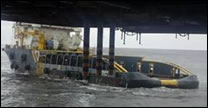
Houston, Texas 77019-3908 USA
Phone: +1-832-654-4003
www.marineenergycorp.com
www.offshoreislandslimited.com
Original Wave Catcher Barges©
Marine Energy
Super Watt Wave Catcher Barges©
Current Catcher Pontoon Barges©
Ocean Fortress© Desalination Plant
Original Wave Catcher Barges©
Open Ocean Current Catchers©
Open Ocean Current Catcher© Power Farms
Tidal Area Current Catchers©
River Current Catchers©
Bridge Current Catchers©
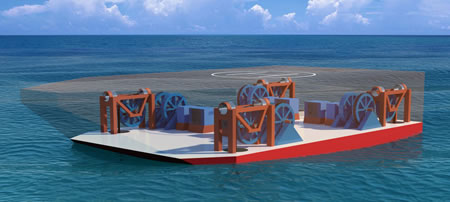
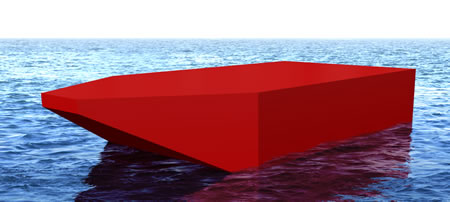
Click for the Wave Catcher Barge© Brochure; Wave Catcher Barge© Sea Technology News Article; and Wave Catcher Barge© Presentation
Click for Video - Supply Vessel in Swell Waves Offshore Angola
Original Wave Catchers©
MEC defines Wave Catchers© as buoyant bodies, like flat bottom barges, that ride the water's surface and use their mooring lines to turn generators located inside the buoyant bodies to generate power. The tops of these mooring lines are likely to be steel wire reinforced belts that go over large diameter pulleys on their way to power large generators. The generators can be of any type known to those familiar with the art. They can be rotating generators, linear generators, hydraulic pump driven generators, compressors, etc.
Original Wave Catcher Barges©
Wave Catchers Barges© use high vertical drag coefficient large flat bottom barge hulls to ride the water's surface. The pressure on these very large flat surface areas lifts the barges almost the height of the swell waves, which typically pass every 5 to 10 seconds. The barge's mooring lines power generators located inside water tight barge enclosures. The top sections of the mooring lines are likely to be of a material that can resist the numerous cycles of varying wave loading and corrosion of mooring lines that must pass through the splash zone. A likely material and configuration for the top of the mooring lines will be steel wire reinforced rubber belts. When the generators are a rotating type, the steel wire reinforced rubber belts first go over large diameter articulated pulleys, then go over large diameter uni-directional pulleys, then turn a large diameter flywheel that finally turns the rotating generators. The forces in the mooring belts are large enough to eventually turn large wind turbine generators. All equipment is likely to be enclosed inside water tight enclosures on top of the barge proving a safe dry area for equipment preservation and personnel access for equipment maintenance. The use of large diameter low friction pulleys in these systems provides minimum mechanical losses on the way to the generators and maximum belt life. Mooring lines can be locked off for belt replacement.
Steel Wire Reinforced Belts:
Steel wire reinforced belts are likely to be used since they have proven to have long lives in all sorts of applications including car and truck engines. Rubber is also resistant to sea water corrosion. Offshore platforms have successfully used reinforced rubber coatings in the splash zone areas for decades. Rubber's long term resistance to seawater is best indicated by airplanes on the decks of sunken World War II aircraft carriers that still have air in their tires.
Large Diameter Articulated Pulleys:
The steel wire reinforced belts first go over a large diameter articulated pulley which is needed to accommodate various mooring line angle changes under the range of possible vessel motion while at the same time maintaining the belt in the center of the pulley and not subjecting the belt to wear or fatigue. Large diameter pulleys maximize belt life and minimize mechanical losses.
The mooring systems articulated pulley is ideally oriented to be parallel to the wave direction so that belt inclination due to vessel offset is automatically accommodated by the curvature of the pulley resulting in the lowest possible transverse belt and pulley loading and the longest system life. Articulated pulleys are ideally cantilevered over the edge of the barge maximizing the available flat area of the barge and maximizing the resulting uplift forces and the power generated.
Large Diameter Uni-directional Pulleys With Recoil Springs:
Large diameter uni-direction pulleys with recoil springs insure the flywheels turn in one direction when the barge is lifted by the wave crests and re-wind the mooring belts back on the pulleys when the barge is lowered by the wave trough. The recoil springs maintain a fairly constant high tension load in the mooring lines at all times.
Large Diameter Flywheels:
Large diameter flywheels maintain the momentum in the system through varying wave loading in the same way that wind turbine rotors maintain the momentum in wind power systems through varying wind loading. If the flywheels are of a similar diameter to the pulleys, they can fit within the water tight enclosure and the barge hull. The flywheels can be further increased in diameter by increasing the height of the enclosure around the flywheels.
The flywheels are turned by the unidirectional pulley at one end which allows the flywheel to continue to turn freely as the recoil spring rewinds the belt back on the unidirectional pulley during wave troughs.
The opposite end of the flywheel turns direct drive generators or a gear box that in turn turns the generators. In both cases, the flywheel's and the vessel hull deflections are isolated from the generator's close tolerance requirements.
Power Output Of 4 Wind Turbine Generators
Preliminary calculations indicate that these barges in an ideal location with significant swell waves, shallow to medium water depth and good seabed conditions have the ability to produce name plate power output from 4 of the world's largest wind turbine generators at a cost similar to onshore wind power. It would be ideal to use the new low mechanical loss direct drive wind turbine generators, but the design capacity at 15 RPM may not match the "Wave Catcher Barge's" RPM and a gear may initially be needed in the drive system in order to use existing direct drive wind turbine generators. The illustration to the right shows a direct drive generator anchoring concept, but others are under development that will isolate barge deflections and flywheel deflections from the close tolerance direct drive generators.
As stated earlier, MEC's "Wave Catcher Barge" patent supports any type of generator including:
- rotating generators
- linear generators
- hydraulic pump driven generators
- compressors
- current generators and MEC's own "Current Catcher" generator support frames suspended from the stationary portions of the system like the sea anchor
MEC has illustrated various mooring systems in their patent that can be used with the wave catcher barges, but many more are possible.
- Mooring systems can be designed that help minimize vessel offset and minimize belt contact with the hull.
- Mooring systems can be designed that help maximize power output by imposing minimum vertical restraint loads on the barge.
- Mooring systems can be designed with fixed headings that can be positioned closer together minimizing the sea bed area they occupy, reducing the power cable lengths between barges and reducing potential power losses
- Mooring systems can be designed that help minimize seabed anchor costs.
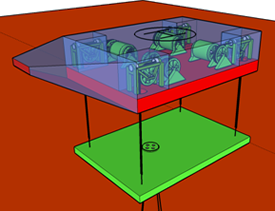
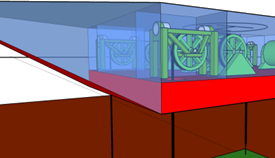
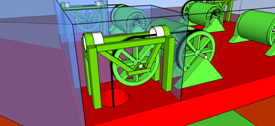
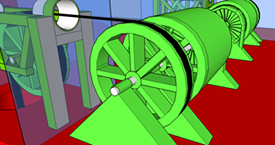
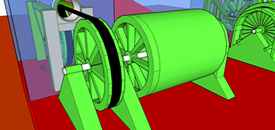
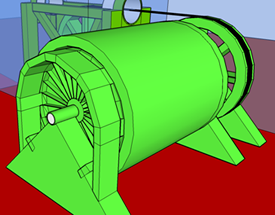
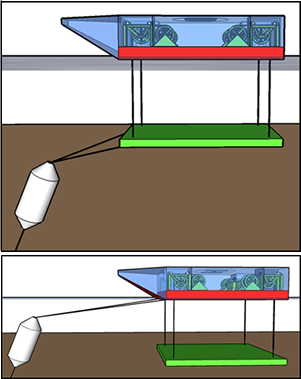
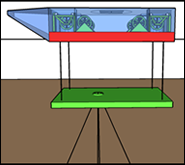
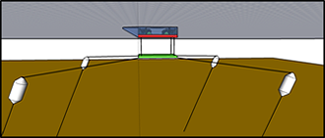
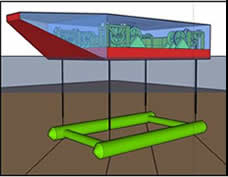
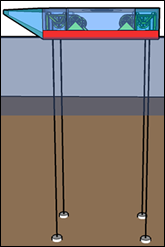 |
